
Got a question? We're happy to help
08719844416Air conditioners work in the same way as a refrigerator or freezer. Instead of cooling just the small insulated space inside, an Air Conditioner can cool a room, a whole house, or an entire business.
Shop All Air Conditioners »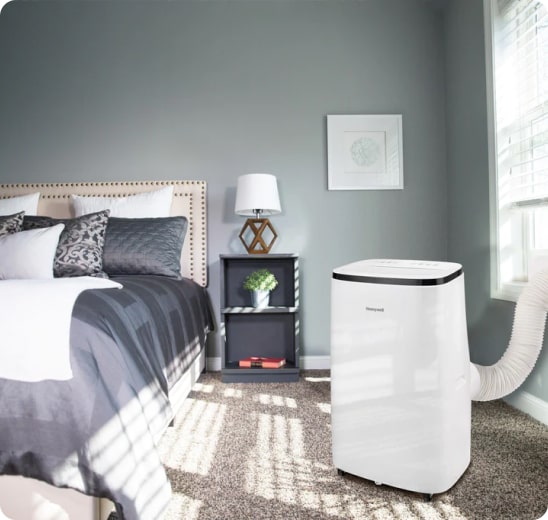
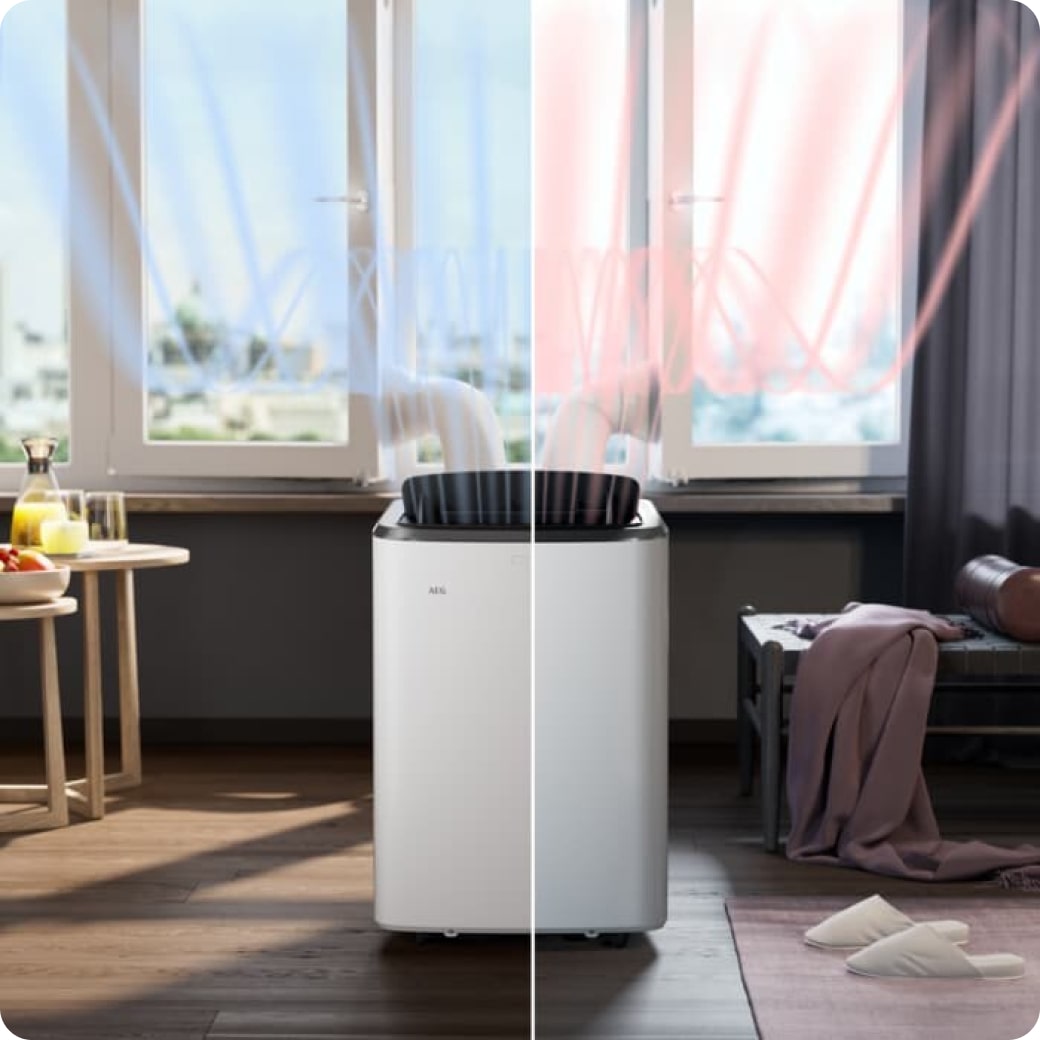
Air conditioners use chemicals that easily convert from a gas to a liquid and back again. This chemical is used to transfer heat from the air inside of a home to the outside air. In the Portable Air Conditioning units we sell, typically a 1.5m hose is used to vent this air outside. Unfortunately this cannot be extended as it would cause heat to back up inside the unit.
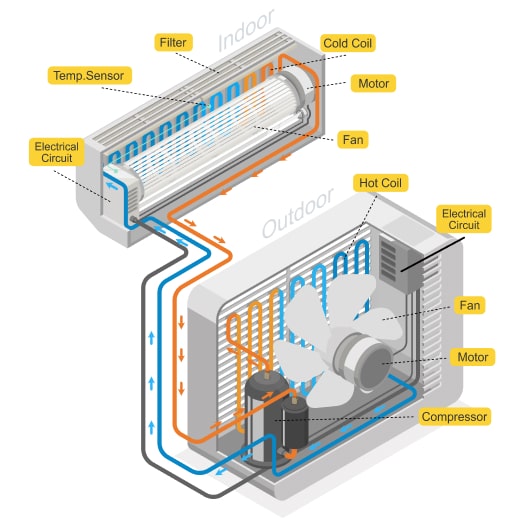
The machine has three main parts. These are a compressor, a condenser and an evaporator. The working fluid arrives at the compressor as a cool, low-pressure gas. The compressor squeezes the fluid. This packs the molecules of the fluid closer together. The closer the molecules are together, the higher its energy and its temperature.
The working fluid leaves the compressor as a hot, high pressure gas and flows into the condenser. When the working fluid leaves the condenser, its temperature is much cooler and it has changed from a gas to a liquid under high pressure. The liquid goes into the evaporator through a very tiny, narrow hole. On the other side, the liquid's pressure drops. When it does it begins to evaporate into a gas.
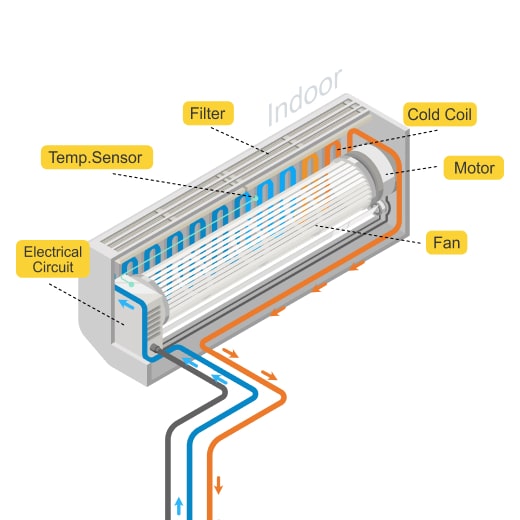
As the liquid changes to gas and evaporates, it extracts heat from the air around it. The heat in the air is needed to separate the molecules of the fluid from a liquid to a gas. The evaporator also has metal fins to help in exchange the thermal energy with the surrounding air.
By the time the working fluid leaves the evaporator, it is a cool, low pressure gas. It then returns to the compressor to begin its trip all over again.
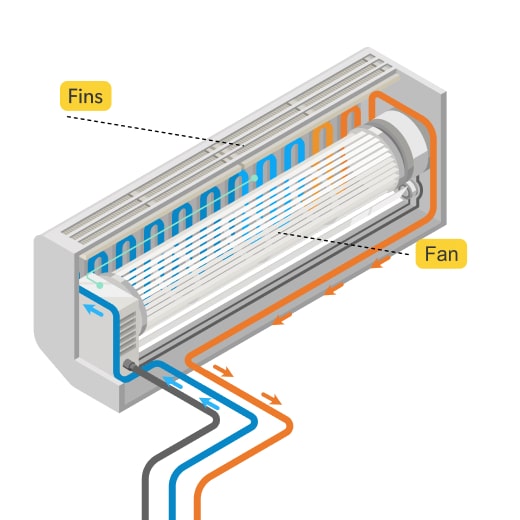
Connected to the evaporator is a fan that circulates the air to blow across the evaporator fins. There is a vent there where air is sucked into the air conditioner and goes down ducts. The hot air is used to cool the gas in the evaporator. As the heat is removed from the air, the air is cooled.
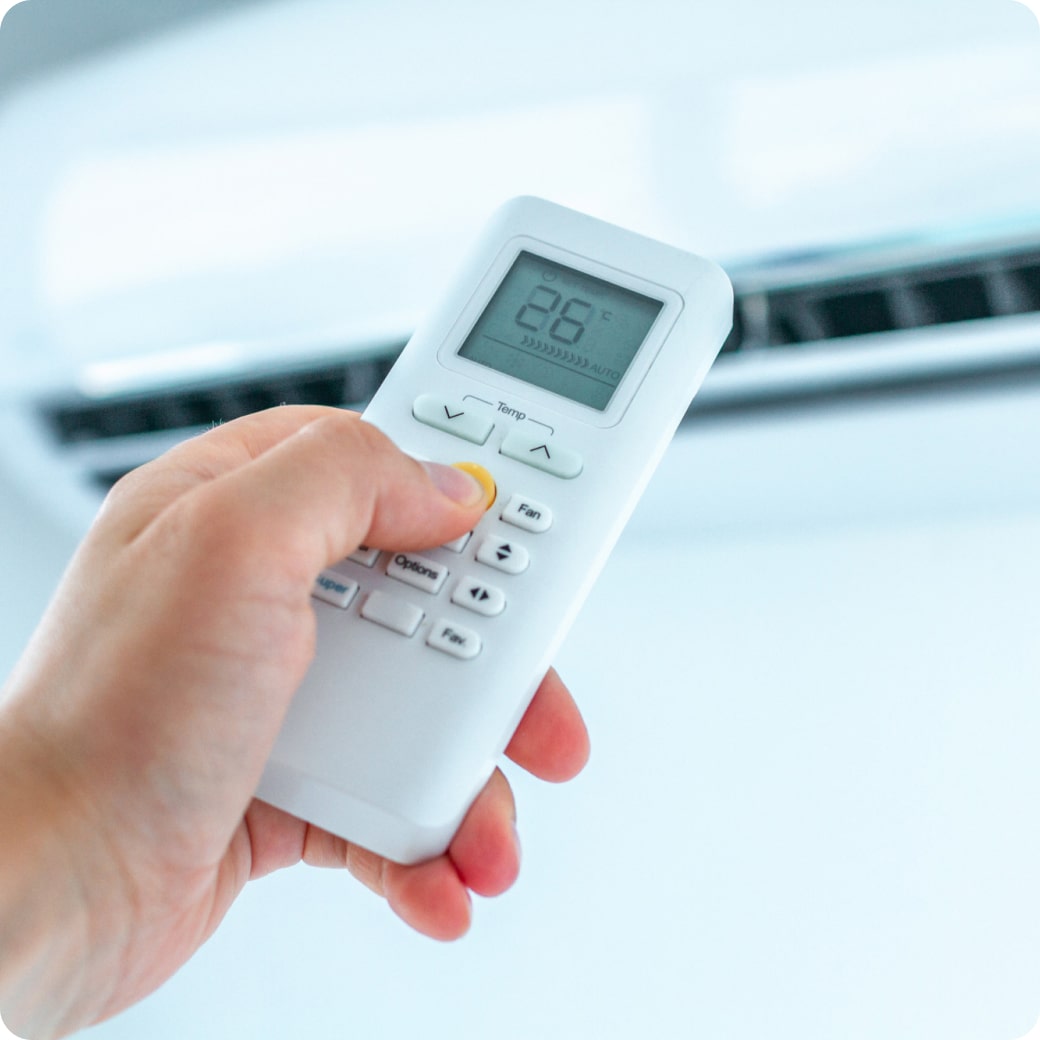
This continues over and over and over until the room reaches the temperature you want the room cooled to. The thermostat senses that the temperature has reached the right setting and turns off the air conditioner. As the room warms up, the thermostat turns the air conditioner back on until the room reaches the temperature.
